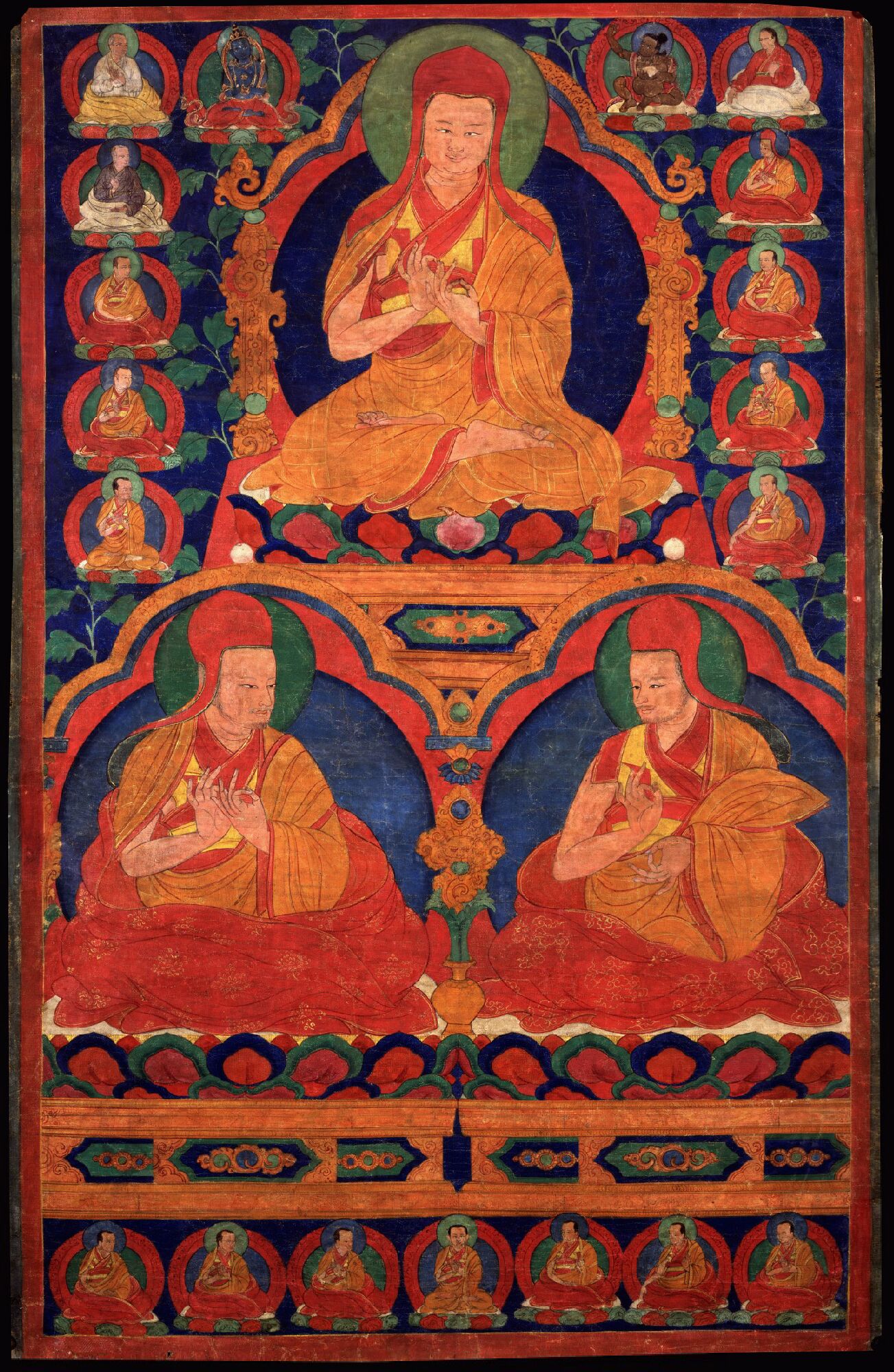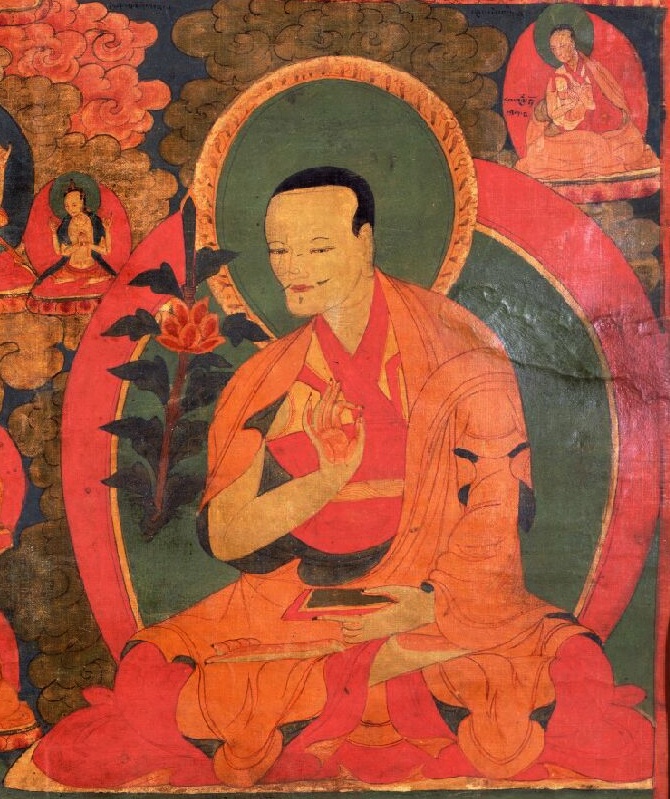Biography and autobiography in Tibet are important sources for both education and inspiration. Tibetans have kept such meticulous records of their teachers that thousands of names are known and discussed in a wide range of biographical material. All these names, all these lives—it can be a little overwhelming. The authors involved in the Treasury of Lives are currently mining the primary sources to provide English-language biographies of every known religious teacher from Tibet and the Himalaya, all of which are organized for easy searching and browsing. Every Tuesday on the Tricycle blog, we will highlight and reflect on important, interesting, eccentric, surprising and beautiful stories found within this rich literary tradition.
Origins of the Ngor Lineage

Ngor Evam Choden Monastery is the seat of the Ngor branch in the Sakya Tradition of Tibetan Buddhism. Known just as well for its art as its scholarship, the monastery was once a center for the Nepali-inspired painting style known in Tibet as “Beri,” which supplied the main institutional support for the Tsokshe, one of the two transmission streams of the Lamdre (“Path and Fruit”) lineage. The Ngor line of great masters begins with its founder Ngorchen Kunga Zangpo (1382–1456) and survives to this day despite the monastery’s destruction in the 1960s. The Treasury of Lives charts the biographies of most of the early abbots of Ngor, offering a narrative portrait of the early days of this important Tibetan institution.
Kunga Zangpo was of spurious parentage. Although his father was said to have been an attendant of Kunga Rinchen (1339–1399), the Seventeenth Sakya Tridzin—head of Sakya Monastery—evidence indicates that Kunga Rinchen himself was in fact Zangpo’s father. As an illegitimate son ineligible for the throne of Sakya, Kunga Zangpo nevertheless enjoyed the patronage of his father’s family estate and received a first-rate education at Sakya—at least to the degree that it was available. When he became ready to receive the full Lamdre transmission he was forced to seek teachers outside of Sakya because no qualified teacher was then in residence there. He found Buddhashri (1339–1420), also known as Sanggye Pel, a teacher about whom almost nothing is known, and Zhonnu Lodro (1358–1414), an ecumenical master who had studied in Nepal.
According to his autobiography, Kunga Zangpo, who strictly observed the monastic codes, felt that there were too many distractions at Sakya Monastery. In 1429, with the support of his biological father’s family, he established Evam Choden Monastery in the remote Ngor Valley, a place “devoid of barmaids.” Ngor soon grew into a center of both study and practice, a powerful institutional branch of the Sakya tradition.

Ngorchen Kunga Zangpo’s students, some of whom were more akin to colleagues, served as the next six abbots of Ngor. The were known as the Ngor Khenchen. It was under the Second Ngorchen, Muchen Sempa Chenpo Konchok Gyeltsen (1388–1469), that the Lamdre teachings were divided into the two transmission streams of Lobshe and Tsokshe. Konchok Gyeltsen likely encountered Kunga Zangpo at Sakya, when both were in their early twenties. Konchok Gyeltsen went on to study Lamdre at the Mugulung cave complex and Ngamring Monastery before assisting Kunga Zangpo in establishing Ngor.
The Sixth Ngor Khenchen was the famous scholar Gorampa Sonam Sengge (1429–1489), known as one of the “Ornaments of Tibet,” a group of six of the Sakya tradition’s most revered masters. A native of Kham, Gorampa studied with the famous Sakya Prajnaparamita master Rongton Sheja Kunrik (1367–1449) for the duration of a year at Nalendra Monastery. Hoping to make a tour of major monasteries in Tibet, Gorampa fell ill and instead travelled to Ngor in 1453, where he spent the better part of the next decade studying with Ngorchen and others.
Gorampa authored the highly influential treatise Distinguishing of the View at 26. Later banned in the 17th century, the work is famous for advocating a Madhyamaka view critical of both the Jonang scholar Dolpopa Sherab Gyeltsen (1292–1361) and Tongkhapa Lobzang Drakpa (1357–1419), the founder of the Geluk tradition. Gorampa also established two new Sakya monasteries in Tsang: Tanak Serling and Tanak Tubten Namgyel. Despite its controversial status, the book has long served as part of the core curriculum at various Sakya monasteries.
Over the next several months the Treasury of Lives will be publishing biographies of all abbots of Ngor through to the present day.

Meet your Treasury of Lives blogger: Alexander Gardner has a PhD from the University of Michigan in Buddhist Studies and serves as the Associate Director of the Rubin Foundation.
Thank you for subscribing to Tricycle! As a nonprofit, we depend on readers like you to keep Buddhist teachings and practices widely available.